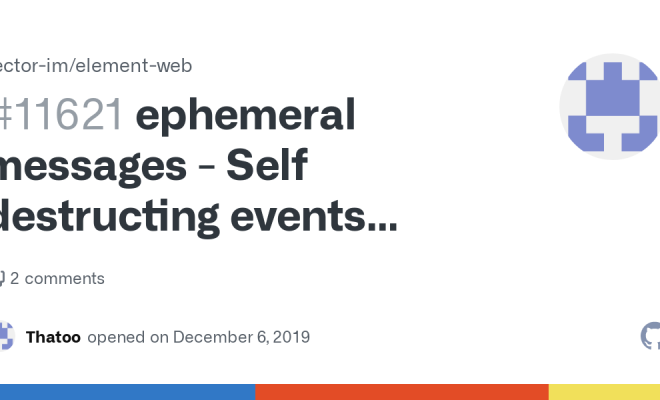How Ephemeral or Self-Destructing Messaging Works

In today’s digital age, almost all communication happens over messaging apps. From WhatsApp to Facebook Messenger, Snapchat to Instagram DMs, we’re constantly exchanging messages with friends, family and colleagues. However, as much as we use these messaging apps, we’re also increasingly concerned about privacy.
That’s where self-destructing messaging comes in. This type of messaging offers a way to send messages that disappear after being read, enhancing privacy and reducing the need to worry about messages being intercepted or accessed by unauthorized parties. Here’s how it works.
Self-Destructing Messaging
Self-destructing messaging is also known as ephemeral messaging. As the name suggests, it involves sending messages that are meant to self-destruct or disappear after a specific period. At its core, self-destructing messaging is designed to help users share messages, videos, photos, and other forms of media that they don’t want to remain stored permanently.
Ephemeral messaging features are available in several messaging apps today, including Snapchat, Facebook Messenger, and Telegram. These apps allow users to send messages that expire after a particular period, usually a few seconds, hours, days or weeks.
The messaging systems of these apps are designed in such a way that the messages are deleted immediately after the set time elapses or if the recipient reads them. Ephemeral messaging ensures that the data disappears from the user’s device, the recipient’s device, and the app’s servers. As such, the recipient cannot access the messages again once they’ve expired.
How to Send Ephemeral Messages
To send an ephemeral message, users need to have a suitable messaging app installed on their devices. Here’s how to send an ephemeral message on a few popular messaging apps:
Snapchat
To use Snapchat’s ephemeral messaging features, users need to follow these simple steps:
1. Open the app and swipe right to access the chat screen
2. Select the friend you want to chat with and tap on their name
3. Type your message, add a photo or a video, if you like
4. Set the timer for how long you want the message to appear (it can be anywhere between 1 and 10 seconds)
5. Hit send
Facebook Messenger
To send an ephemeral message on Facebook Messenger, follow these steps:
1. Open the app and tap on the friend you want to send a message to
2. Tap on the ‘i’ (information) icon in the upper-right corner of the screen
3. Choose the ‘secret conversation’ option
4. Type your message and add media, if required
5. Tap on the timer icon to set the expiration time (you can choose any time between 5 seconds and 1 day)
6. Hit send
Telegram
To send an ephemeral message on telegram, follow these steps:
1. Open the app and tap on the friend you want to send a message to
2. Swipe right to start a new chat
3. Type your message and add media if needed
4. Tap the clock icon, and the user can choose when the message is deleted.
5. Hit send
Why Use Ephemeral Messaging
There are several reasons why users choose to send ephemeral messages, including:
1. Privacy: Ephemeral messaging offers a level of privacy that is not possible with traditional messaging. Users don’t have to worry about messages being intercepted, and they don’t have to delete messages manually.
2. Security: Ephemeral messaging also provides increased security as messages are encrypted and often deleted from the sender, recipient, and messaging platform servers.
3. Convenience: As users no longer need to worry about deleting messages, it reduces the effort required to manage a messaging app.
Conclusion
Self-destructing messaging is growing in popularity, mainly due to concerns around privacy and security. By using ephemeral messaging, users can send messages without worrying about them being intercepted, accessed without authorization, or stored indefinitely. Although self-destructing messaging is not a foolproof method of communication, it certainly provides a degree of privacy and security that is not available with traditional messaging. As such, it is a useful tool for individuals, businesses, and organizations concerned about their privacy online.





